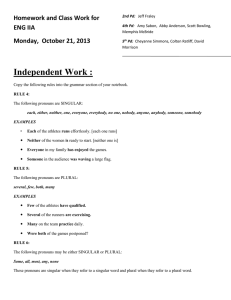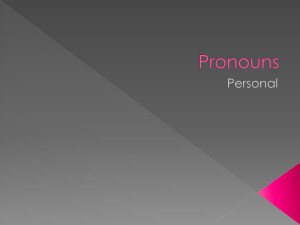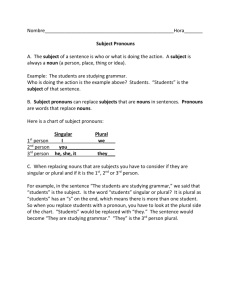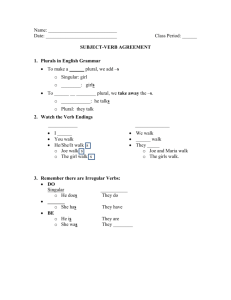Textual Evidence for In-class Essay on
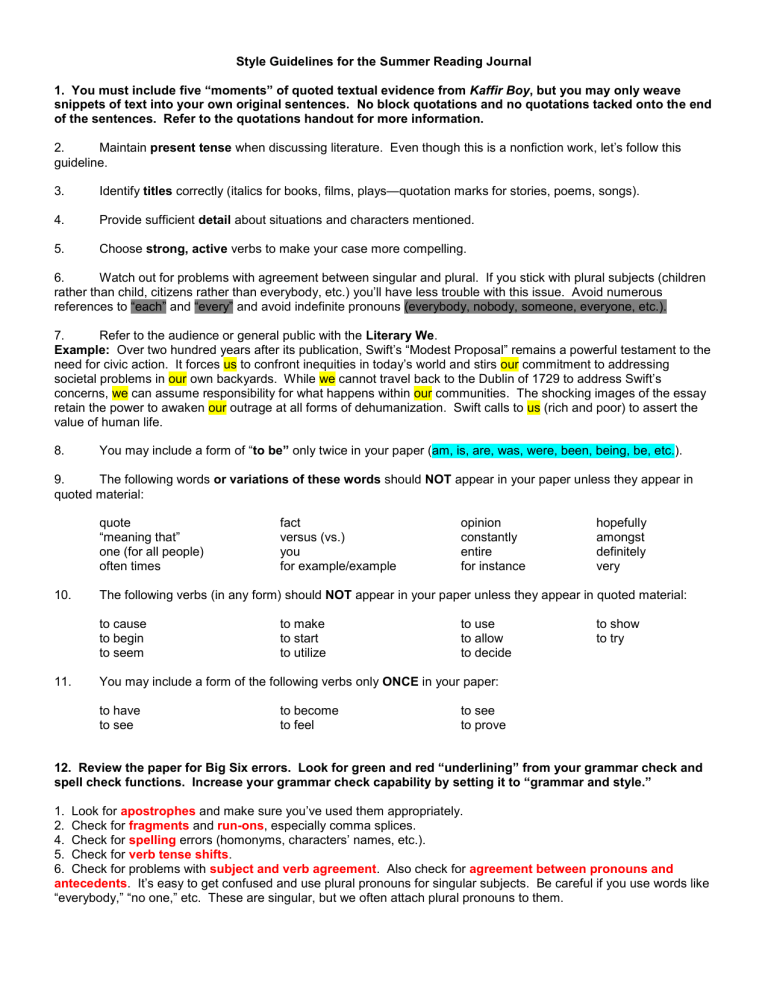
Style Guidelines for the Summer Reading Journal
1. You must include five “moments” of quoted textual evidence from Kaffir Boy, but you may only weave snippets of text into your own original sentences. No block quotations and no quotations tacked onto the end of the sentences. Refer to the quotations handout for more information.
2. Maintain present tense when discussing literature. Even though this is a nonfiction work, let’s follow this guideline.
3. Identify titles correctly (italics for books, films, plays —quotation marks for stories, poems, songs).
4.
5.
Provide sufficient detail about situations and characters mentioned.
Choose strong, active verbs to make your case more compelling.
6. Watch out for problems with agreement between singular and plural. If you stick with plural subjects (children rather than child, citizens rather than everybody, etc.) you’ll have less trouble with this issue. Avoid numerous references to “each” and “every” and avoid indefinite pronouns (everybody, nobody, someone, everyone, etc.).
7. Refer to the audience or general public with the Literary We .
Example: Over two hundred years after its publication, Swift’s “Modest Proposal” remains a powerful testament to the need for civic action. It forces us to con front inequities in today’s world and stirs our commitment to addressing societal problems in our own backyards. While we cannot travel back to the Dublin of 1729 to address Swift’s concerns, we can assume responsibility for what happens within our communities. The shocking images of the essay retain the power to awaken our outrage at all forms of dehumanization. Swift calls to us (rich and poor) to assert the value of human life.
8. You may include a form of “ to be” only twice in your paper (am, is, are, was, were, been, being, be, etc.).
9. The following words or variations of these words should NOT appear in your paper unless they appear in quoted material: quote
“meaning that” one (for all people)
10. fact versus (vs.) you opinion constantly entire hopefully amongst definitely often times for example/example for instance very
The following verbs (in any form) should NOT appear in your paper unless they appear in quoted material: to cause to begin to seem to make to start to utilize to use to allow to decide to show to try
11. You may include a form of the following verbs only ONCE in your paper: to have to see to become to feel to see to prove
12. Review the paper for Bi g Six errors. Look for green and red “underlining” from your grammar check and spell check functions. Increase your grammar check capability by setting it to “grammar and style.”
1. Look for apostrophes and make sure you’ve used them appropriately.
2. Check for fragments and run-ons , especially comma splices.
4. Check for spelling errors (homonyms, characters’ names, etc.).
5. Check for verb tense shifts .
6. Check for problems with subject and verb agreement . Also check for agreement between pronouns and antecedents . It’s easy to get confused and use plural pronouns for singular subjects. Be careful if you use words like
“everybody,” “no one,” etc. These are singular, but we often attach plural pronouns to them.
